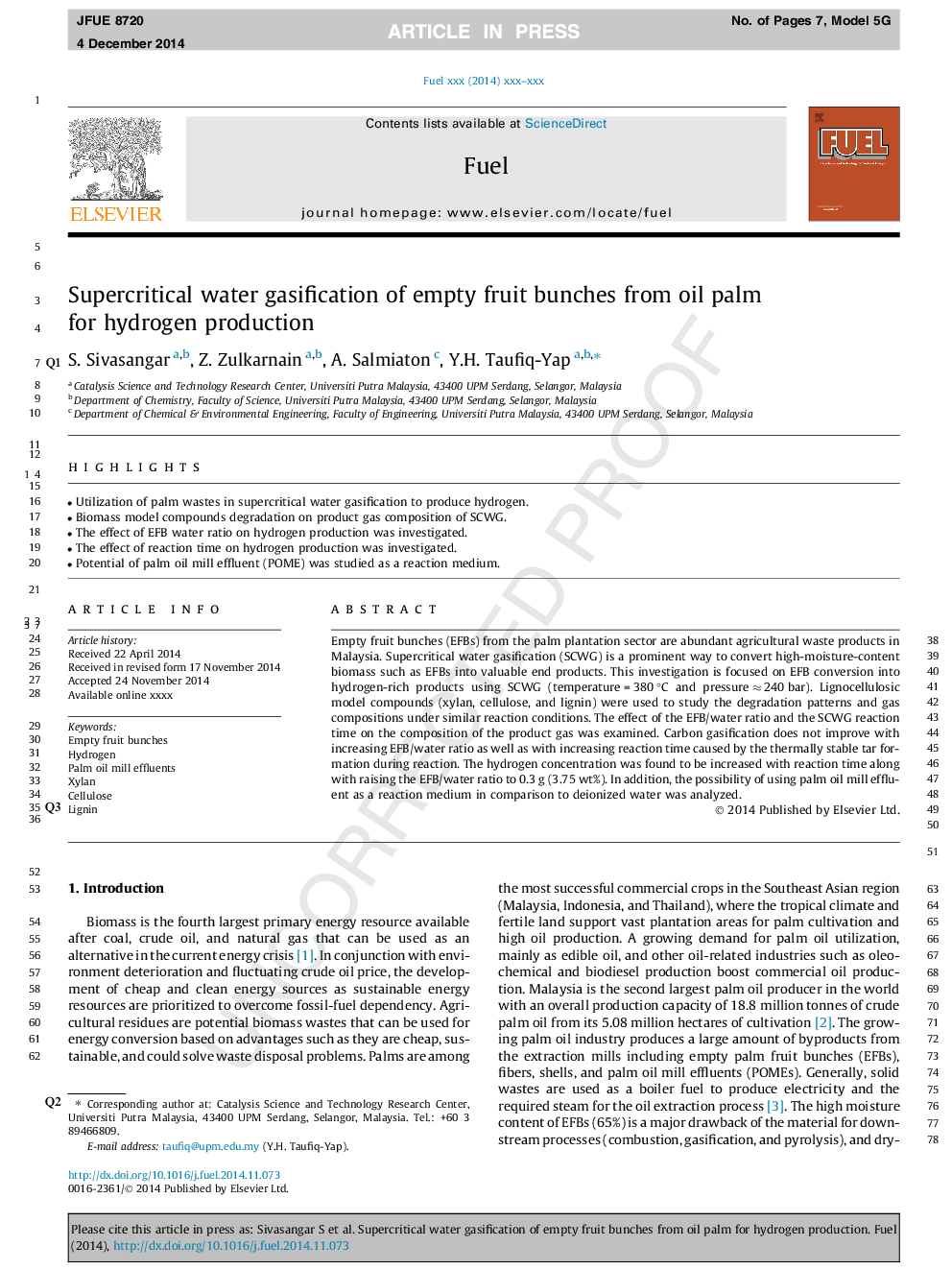| Article ID | Journal | Published Year | Pages | File Type |
|---|---|---|---|---|
| 6636038 | Fuel | 2015 | 7 Pages |
Abstract
Empty fruit bunches (EFBs) from the palm plantation sector are abundant agricultural waste products in Malaysia. Supercritical water gasification (SCWG) is a prominent way to convert high-moisture-content biomass such as EFBs into valuable end products. This investigation is focused on EFB conversion into hydrogen-rich products using SCWG (temperature = 380 °C and pressure â 240 bar). Lignocellulosic model compounds (xylan, cellulose, and lignin) were used to study the degradation patterns and gas compositions under similar reaction conditions. The effect of the EFB/water ratio and the SCWG reaction time on the composition of the product gas was examined. Carbon gasification does not improve with increasing EFB/water ratio as well as with increasing reaction time caused by the thermally stable tar formation during reaction. The hydrogen concentration was found to be increased with reaction time along with raising the EFB/water ratio to 0.3 g (3.75 wt%). In addition, the possibility of using palm oil mill effluent as a reaction medium in comparison to deionized water was analyzed.
Related Topics
Physical Sciences and Engineering
Chemical Engineering
Chemical Engineering (General)
Authors
S. Sivasangar, Z. Zainal, A. Salmiaton, Y.H. Taufiq-Yap,
